Dura Heat kerosene heaters are reliable‚ portable‚ and efficient heating solutions designed for safe indoor and outdoor use. They feature automatic ignition systems‚ fuel gauges‚ and long-term storage modes.
Always read the manual carefully before use to ensure proper assembly‚ operation‚ and maintenance. These heaters provide consistent heat with minimal fuel consumption‚ making them ideal for various settings.
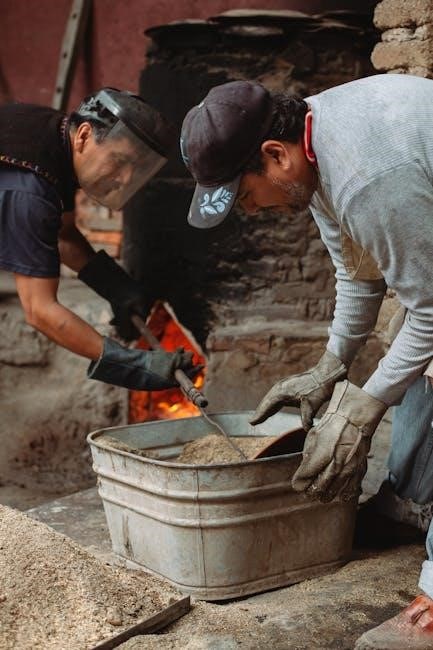
Overview of the Heater
The Dura Heat kerosene heater is a portable and efficient heating solution designed for safe and reliable performance. It features an automatic ignition system‚ a fuel gauge‚ and a long-term storage mode‚ ensuring ease of use and maintenance. The heater is constructed with durable materials‚ making it suitable for both indoor and outdoor applications. Its compact design allows for easy transportation and placement in various settings‚ providing consistent heat with minimal fuel consumption. The unit is equipped with essential safety features‚ such as ventilation requirements and proper fuel handling guidelines‚ to ensure safe operation. The heater’s design emphasizes user convenience‚ with clear instructions provided in the manual for assembly‚ operation‚ and storage. Whether for emergency heating or supplemental warmth‚ the Dura Heat kerosene heater is a practical choice for homeowners and outdoor enthusiasts alike.
Key features include a robust build‚ efficient fuel utilization‚ and a user-friendly interface‚ making it a dependable option for heating needs. The manual provides detailed guidance to maximize performance and safety. Proper maintenance ensures longevity and optimal functionality. Always follow the manual’s instructions for assembly‚ operation‚ and storage to ensure safe and efficient use. Regular cleaning and seasonal storage are essential to maintain the heater’s performance and extend its service life. By adhering to the guidelines‚ users can enjoy reliable heat during cold weather. The Dura Heat kerosene heater is a versatile and cost-effective solution for various heating requirements. Its portability and efficiency make it an excellent choice for both residential and outdoor use. Always prioritize safety and proper maintenance to ensure optimal performance. The heater’s design and features are tailored to meet the needs of users seeking a dependable and efficient heating solution.
Importance of the Manual
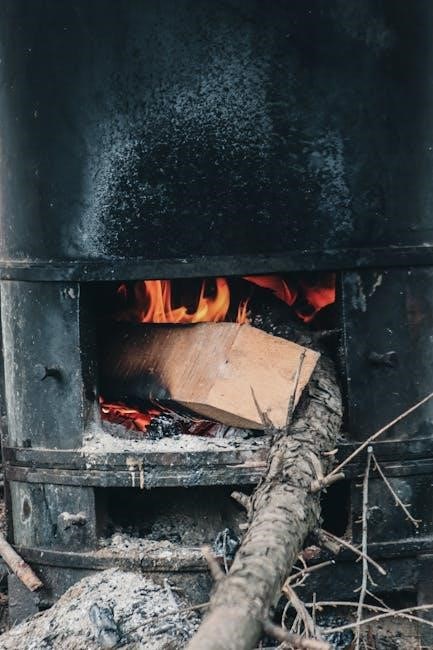
The owner’s manual for the Dura Heat kerosene heater is an essential resource for safe and efficient operation. It provides detailed instructions for assembly‚ maintenance‚ and storage‚ ensuring the heater performs optimally and lasts for years. Reading the manual carefully before first use is crucial to understand safety precautions‚ proper fuel handling‚ and ventilation requirements. The manual also includes troubleshooting tips and guidelines for resolving common issues‚ helping users maintain the heater’s performance. By following the manual’s instructions‚ users can avoid potential hazards and ensure the heater operates safely and effectively. The manual serves as a comprehensive guide‚ covering everything from initial setup to seasonal storage‚ making it an indispensable tool for anyone using the Dura Heat kerosene heater. Always keep the manual handy for future reference to ensure continued safe and efficient use of the heater.
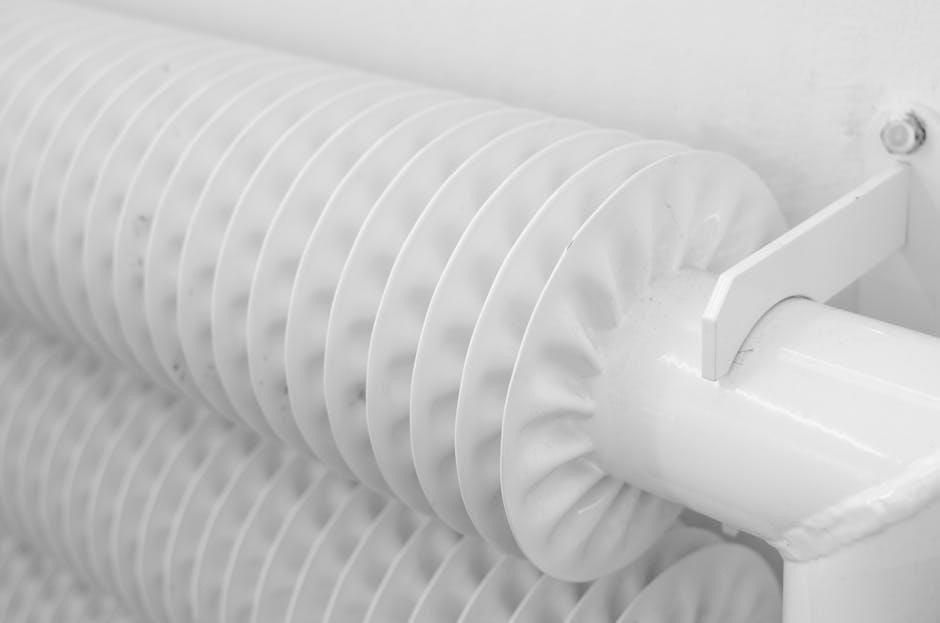
Safety Precautions
Always follow safety guidelines to ensure safe operation. Use only 1-K kerosene or No. 1 fuel oil. Never fill the tank indoors or near open flames. Keep the heater away from flammable materials and ensure proper ventilation to avoid carbon monoxide risks.
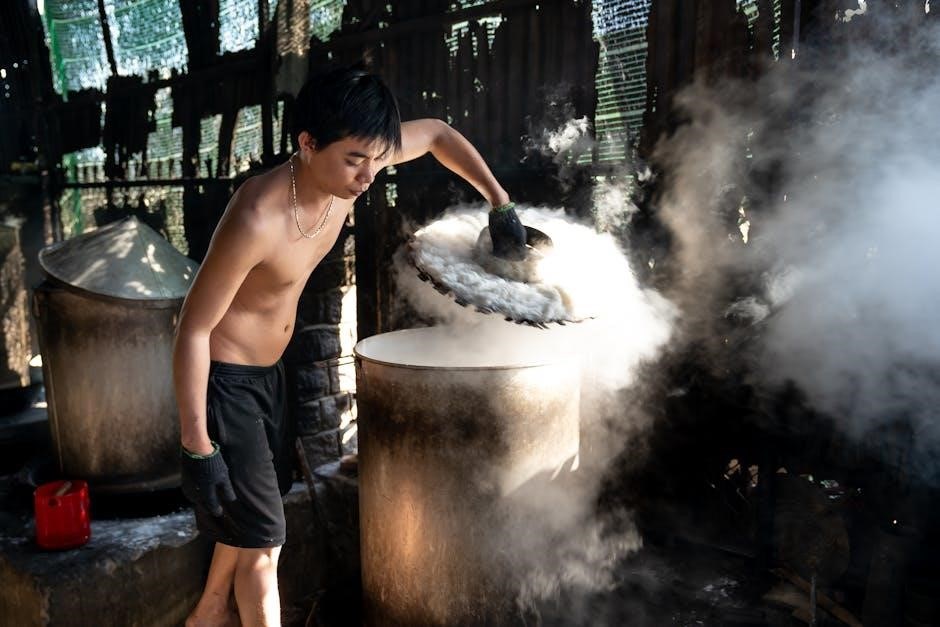
Essential Warnings
Always adhere to the following critical safety guidelines to ensure safe and efficient operation of your Dura Heat kerosene heater:
- Never use fuels other than 1-K kerosene or No. 1 fuel oil. Gasoline‚ benzene‚ or paint thinner are highly dangerous and can cause explosions or fires.
- Never fill the fuel tank indoors or near open flames. Fumes are highly flammable and can ignite‚ leading to serious accidents.
- Ensure proper ventilation in the room. Inadequate airflow can lead to carbon monoxide buildup‚ which is deadly.
- Do not operate the heater near flammable materials. Keep it away from curtains‚ bedding‚ or other combustible items.
- Never leave the heater unattended while in operation. Monitor it at all times to prevent accidents.
- Do not store kerosene for extended periods‚ especially over summer months. Old fuel can degrade and damage the heater.
- Always follow the manufacturer’s instructions for assembly‚ maintenance‚ and storage. Failure to comply can result in malfunction or safety hazards.
- Keep the owner’s manual handy for reference. It contains vital information for troubleshooting and safe operation.
By following these essential warnings‚ you can enjoy safe and efficient heating with your Dura Heat kerosene heater.
Ventilation Requirements
Proper ventilation is crucial for safe operation of your Dura Heat kerosene heater. Ensure the room is well-ventilated to prevent carbon monoxide buildup and maintain air quality.
Provide at least three square feet (2‚800 sq. cm) of ventilation. Open windows slightly or use vents to ensure adequate airflow. Never operate the heater in a poorly ventilated or enclosed space.
Avoid running the heater in areas with limited air circulation‚ as this can lead to dangerous fume accumulation. Always monitor the room for signs of inadequate ventilation‚ such as dizziness or headaches‚ and take immediate action if they occur.
By adhering to these ventilation guidelines‚ you can ensure a safer and more efficient heating experience with your Dura Heat kerosene heater.
Proper Fuel Handling
Always use 1-K kerosene or No. 1 fuel oil in your Dura Heat heater‚ as specified in the manual. Never substitute with gasoline‚ benzene‚ or other fuels‚ as this can cause unsafe operation or damage.
Fill the fuel tank outdoors to avoid vapors accumulating indoors. Remove the heater and fuel from the living space when refueling. Use a high-quality‚ clean fuel source to ensure optimal performance and safety.
Avoid storing kerosene during summer months for next season’s use‚ as it can degrade and damage the heater. Properly reinstall the fuel cap after refueling to prevent leaks and spills.
Refer to your manual for detailed instructions on fuel handling to ensure safe and efficient operation of your Dura Heat kerosene heater.
Storage Guidelines
Proper storage of your Dura Heat kerosene heater is essential for safety and longevity. Before storing‚ ensure the heater is completely cool and free from fuel. Drain all remaining kerosene from the tank and store it separately in an approved container.
Clean the heater thoroughly‚ removing any dirt‚ soot‚ or debris. Protect the wick by covering it to prevent dust accumulation. Store the heater in a dry‚ well-ventilated area away from flammable materials.
Do not store kerosene for extended periods‚ especially over summer months‚ as it can degrade and cause issues during the next heating season. Always follow the manufacturer’s instructions for seasonal storage to ensure the heater remains in good condition.
Keep the heater out of reach of children and pets during storage. Proper storage practices will help maintain the heater’s performance and ensure safe operation when it is needed again.
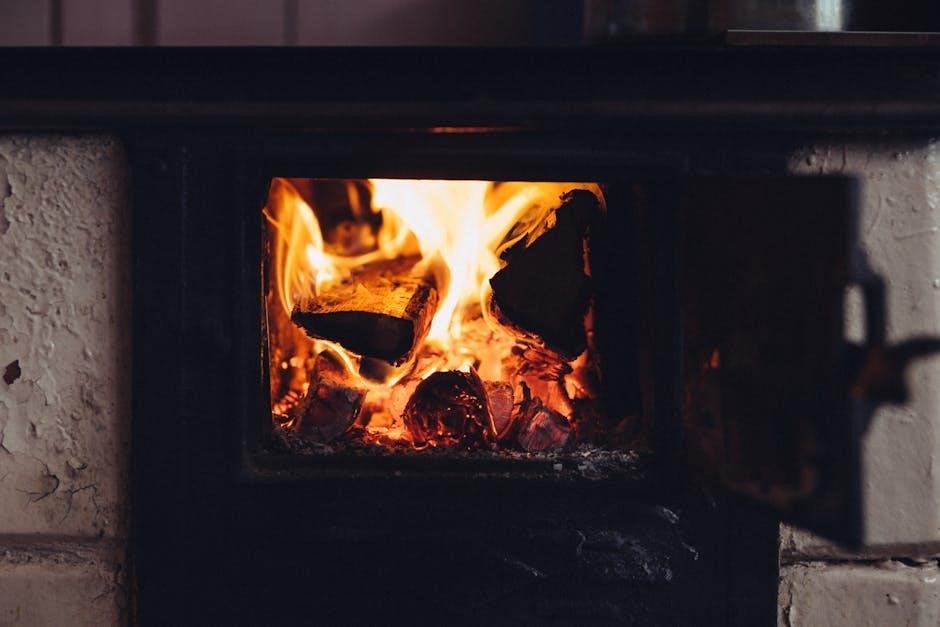
Assembly and Installation
Begin by carefully unboxing and inventorying all components to ensure nothing is damaged or missing. Follow the manual’s step-by-step instructions for assembling the heater‚ ensuring all parts are properly connected and aligned.
After assembly‚ place the heater on a stable‚ level surface away from flammable materials. Double-check all connections and ensure the area is clear before first use.
Unboxing and Inventory
Begin by carefully unpacking the Dura Heat kerosene heater from its box‚ ensuring all components are accounted for and undamaged. Inspect the heater unit‚ wick‚ fuel cap‚ and hardware for any signs of damage or wear.
Refer to the manual’s packing list to verify the inclusion of all necessary parts‚ such as the ignition system‚ fuel tank‚ and instructional materials; Compare each item against the list to ensure nothing is missing or damaged.
Handle each component with care‚ especially the wick and fuel system‚ as improper handling can lead to future operational issues. Place small parts‚ like screws or brackets‚ in a secure container to prevent loss.
Examine the heater’s exterior for any dents‚ cracks‚ or manufacturing defects that could compromise safety or performance. If any damage is found‚ contact the manufacturer before proceeding.
Organize all components in a clean‚ dry workspace before beginning assembly. This step ensures a smooth and efficient setup process‚ minimizing the risk of missing or misplaced parts.
Once all items are inventoried and inspected‚ proceed to the initial setup phase‚ following the manual’s detailed instructions for proper assembly and installation.
Initial Setup
Place the Dura Heat kerosene heater on a level‚ stable surface‚ away from flammable materials and ignition sources. Ensure the area is clear of clutter and well-ventilated for safe operation.
Install the wick according to the manual’s instructions‚ taking care not to touch the wick surface‚ as oils from skin can affect performance. Secure the wick in its designated position‚ ensuring proper alignment with the burner.
Before adding fuel‚ double-check that the heater is on a firm‚ heat-resistant surface. Fill the fuel tank outdoors using only 1-K kerosene or No. 1 fuel oil‚ as specified in the manual. Avoid overfilling‚ and ensure the fuel cap is tightly secured to prevent leaks.
Connect any additional components‚ such as the ignition system or fuel lines‚ following the manual’s step-by-step guide. Ensure all connections are snug and free from damage or wear.
Once the initial setup is complete‚ refer to the manual for specific instructions on ignition and operation. Always follow safety guidelines to ensure proper and efficient heater performance.
Remember to test the heater at a low setting before full operation to verify correct function and detect any potential issues early. Adjust as needed based on the manual’s recommendations.
Connecting Components
Connecting the components of your Dura Heat kerosene heater is a critical step that ensures safe and efficient operation. Begin by carefully unpacking all parts and matching them with the inventory list provided in the manual.
Start by attaching the fuel tank to the heater base. Ensure the connection is secure and free from leaks. Next‚ connect the burner assembly to the main unit‚ aligning it properly with the wick holder. Tighten all screws firmly but avoid over-tightening‚ which could damage the threads.
Install the ignition system by connecting the battery compartment and ensuring the igniter plug is securely fastened. Reattach the guard bracket by aligning the screws and tightening them in a star pattern for even pressure. Double-check all connections to ensure they are snug and free from gaps.
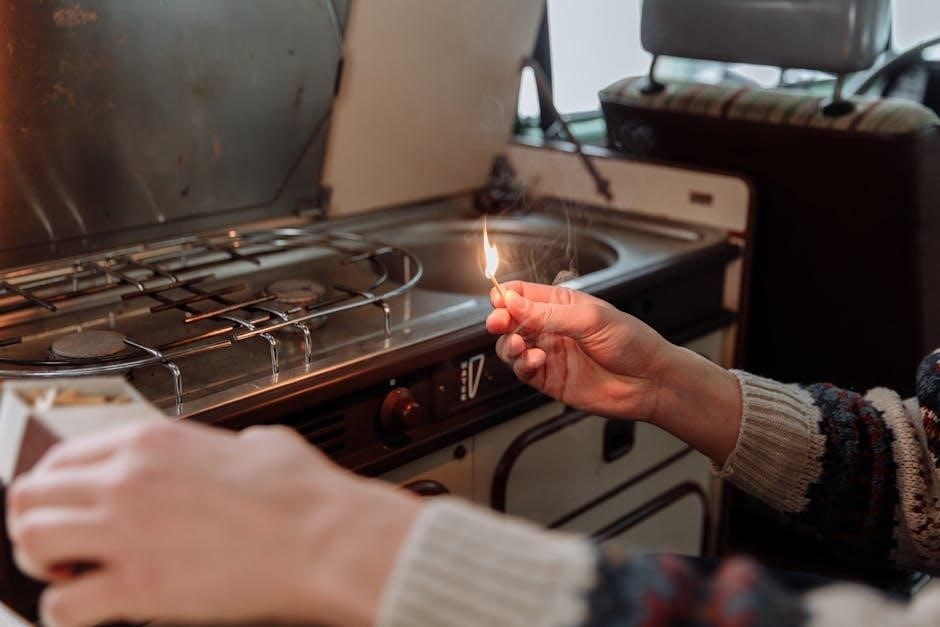
Finally‚ reconnect any additional accessories‚ such as the fuel line or external controls‚ following the manual’s instructions. Once all components are connected‚ perform a visual inspection to confirm everything is properly secured and in place.
Avoid using any damaged or worn-out parts‚ as this could compromise safety and performance. If unsure about any connection‚ refer to the manual or contact customer support for assistance.
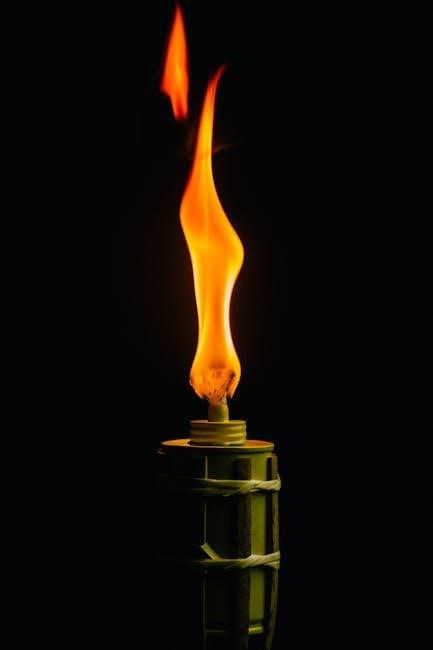
Operating Instructions
Ensure the heater is on a level surface and properly assembled. Fill the tank outdoors with 1-K kerosene or No; 1 fuel oil. Allow the wick to soak before ignition. Follow manual instructions for safe operation and adjustment.
Ignition Process
The ignition process of your Dura Heat kerosene heater is straightforward but requires careful attention to safety. Begin by ensuring the heater is placed on a level‚ stable surface and that all components are properly assembled. Open the fuel valve slowly to allow kerosene to flow to the wick. Adjust the wick to the recommended height‚ usually just above the burner. Light the wick with a match or use the automatic ignition system if available. Allow the wick to burn for a few minutes before adjusting the burner for the desired flame height.
Monitor the flame closely during the initial ignition to ensure it burns evenly and cleanly. If the flame appears too high or low‚ adjust the wick height accordingly. Always follow the manual’s specific instructions for ignition‚ as improper lighting can lead to unsafe operating conditions. Never leave the heater unattended during the ignition process or while in operation.
After ignition‚ allow the heater to warm up fully before adjusting the wick or moving the unit. Proper ignition ensures efficient and safe operation of your Dura Heat kerosene heater. Always prioritize safety and adhere to the guidelines provided in the manual.
Adjusting the Wick
Properly adjusting the wick is crucial for the safe and efficient operation of your Dura Heat kerosene heater. The wick height determines the flame size and heat output. Always turn off the heater and allow it to cool before making any adjustments; Locate the wick adjustment knob‚ typically found on the burner or control panel. Turn the knob clockwise to lower the wick or counterclockwise to raise it. Ensure the wick is set to the recommended height specified in the manual to avoid excessive flame height or insufficient heat.
A correct flame height should be approximately 1/2 inch‚ with a blue tint indicating proper combustion. If the flame appears too high or erratic‚ reduce the wick height. Conversely‚ if the flame is too low‚ slightly increase the wick height. Never adjust the wick while the heater is in operation‚ as this can lead to unsafe conditions. Regularly inspect the wick for signs of wear or discoloration‚ as a damaged wick may require replacement. Adjusting the wick correctly ensures optimal performance and safety of your Dura Heat kerosene heater.
Monitoring Flame Height
Monitoring the flame height of your Dura Heat kerosene heater is essential for safe and efficient operation. The ideal flame height should be approximately 1/2 inch‚ with a blue tint indicating proper combustion. After ignition‚ observe the flame to ensure it burns steadily and evenly. If the flame appears too high or erratic‚ it may indicate an improper wick adjustment or drafts in the room.
Regularly check the flame height during operation‚ especially when adjusting the wick or after refueling. A flame that is too low may result in insufficient heat‚ while a flame that is too high can produce excessive heat and potentially damage the heater. Always ensure the flame remains within the recommended height specified in the manual. If the flame height cannot be stabilized‚ turn off the heater and refer to the troubleshooting section of the manual. Proper flame monitoring ensures optimal performance and safety of your Dura Heat kerosene heater.
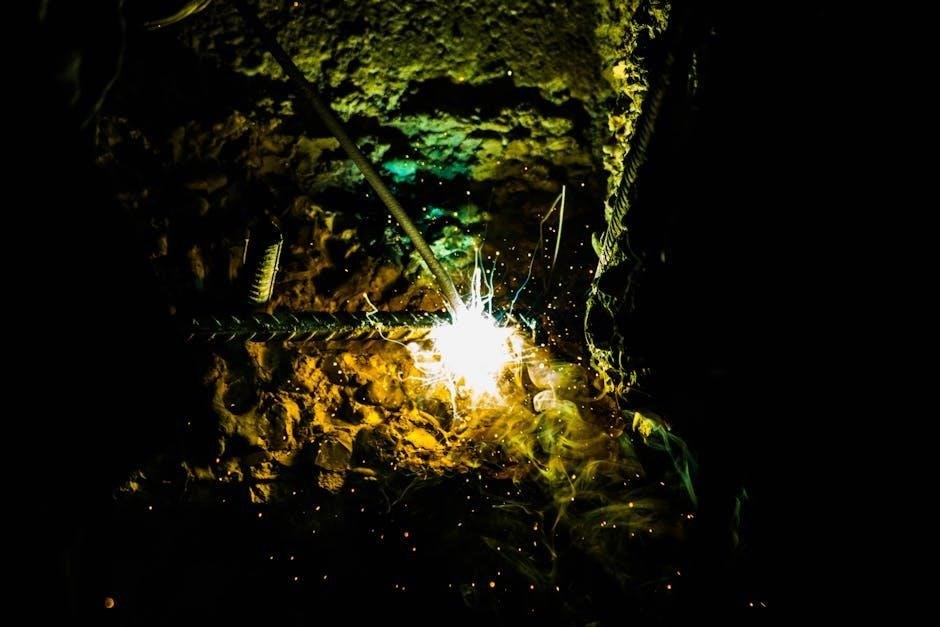
Maintenance and Upkeep
Regular maintenance ensures optimal performance and longevity of your Dura Heat kerosene heater. Clean the heater thoroughly‚ including the wick and burner‚ to prevent residue buildup. Always store the heater in a dry‚ well-ventilated area during the off-season.
Replace the wick annually or as recommended in the manual. Drain leftover kerosene before long-term storage to prevent degradation. Follow the manual’s guidelines for proper upkeep to maintain safety and efficiency. Regular checks will help prevent operational issues.
Cleaning the Heater
Cleaning your Dura Heat kerosene heater is essential for maintaining its performance and safety. Start by turning off the heater and allowing it to cool completely before cleaning. Remove any detachable parts‚ such as the wick and burner‚ and clean them separately using a soft brush or cloth to eliminate dust and debris.
For tougher stains or residue‚ use a mild detergent mixed with warm water. Avoid abrasive materials that could damage the finish. Gently scrub the surfaces and rinse with clean water. Dry all components thoroughly to prevent moisture buildup.
Regularly inspect and clean the fuel tank and lines to ensure no residue or old fuel remains. This prevents contamination and maintains efficient operation. Always refer to the manual for specific cleaning instructions tailored to your model.
Proper cleaning not only extends the heater’s lifespan but also ensures safe and efficient heating. By following these steps‚ you can keep your Dura Heat kerosene heater in optimal condition for years to come.
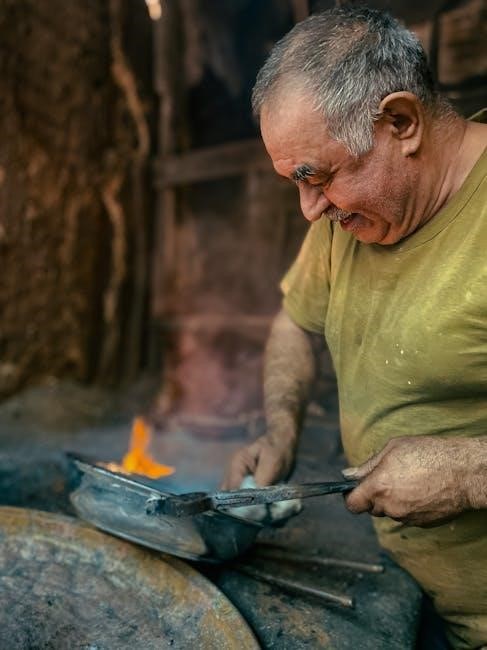
Replacing the Wick
Replacing the wick in your Dura Heat kerosene heater is a straightforward process that ensures optimal performance and safety. Start by turning off the heater and allowing it to cool completely. Locate the wick assembly‚ usually accessible by removing the top cover or burner unit as specified in the manual.
Once accessible‚ carefully pull the wick downward to remove it from the heater. Dispose of the old wick responsibly. Take the new wick and insert it into the designated slot‚ ensuring it is properly seated and aligned according to the manufacturer’s instructions.
After installing the new wick‚ replace any components you removed and test the heater by lighting the wick. Monitor the flame height to ensure it burns evenly and at the recommended level. Regular wick replacement helps maintain efficient combustion and prevents soot buildup.
Always use a genuine Dura Heat replacement wick to ensure compatibility and safety. Refer to the manual for specific guidance tailored to your heater model; Proper wick maintenance is crucial for extending the heater’s lifespan and ensuring reliable operation.
Seasonal Storage
Proper seasonal storage of your Dura Heat kerosene heater is essential to maintain its performance and longevity. Before storing‚ ensure the heater is completely cool and free from any fuel residue. Drain the fuel tank outdoors‚ using an approved container‚ and wipe down the unit to remove dirt or soot buildup.
Store the heater in a dry‚ well-ventilated area‚ away from direct sunlight and flammable materials. Use a protective cover to shield it from dust and moisture. Never store kerosene for extended periods‚ as it can degrade and damage the heater when used again.
Before placing the heater in storage‚ ensure all components are secure and no fuel is left in the tank. This prevents corrosion and ensures the heater is ready for safe use next season. Always refer to the manual for specific storage recommendations tailored to your model.
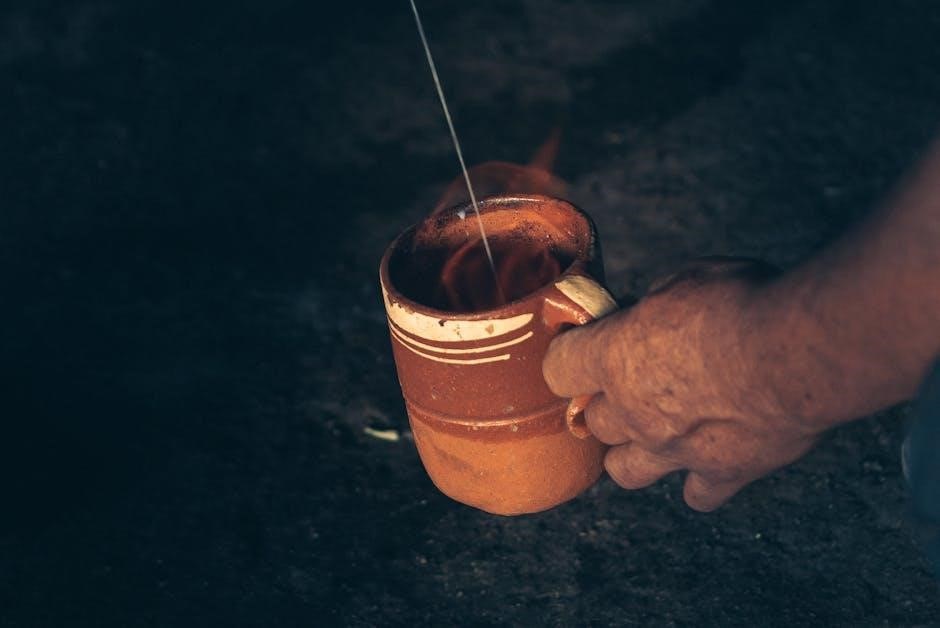
No Responses